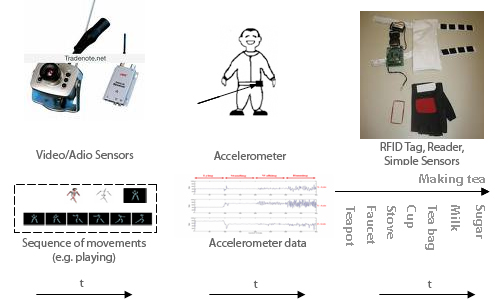Acticity Recognition Team
|
| Research Objectives and Significance |
Increasing demand on public healthcare service due to the aging population has become a major problem in developed countries, driving a need to build ubiquitous healthcare systems. In such systems, activity recognition is an indispensable component. By analyzing human’s activity, much useful information about human’s health condition could be extracted. According to gerontologists, identifying everyday activity such as sleeping, food preparation, housekeeping, entertainment, and exercise is often more valuable than biometric information for the early detection of emerging physical and mental health problems - particularly for the elderly.
Significance of Research:
- No current widely accepted activity recognition technique
- Current approaches are limited to a number of activities
- Activity recognition accuracy is not very high
- No efficient way to setup a home for activity recognition
|
| Activity Recognition Approaches |
In ubiquitous health ware system, activity is a kind of high-level context, which is always deduced from low-level sensor information. There are at least three ways automatically acquire data about people’s activities using sensor systems as shown in Figure 1:
- Remotely observe the scene using audio, visual, electromagnetic field, or other sensors and interpret the signal readings.
- Attach sensors to the body and interpret the signal readings.
- Attach sensors to objects and devices in the environment and interpret the sensor readings.
Once the relevant sensors’ information is got, many machine learning methods could be used to derive activity. The available methods include Neural Networks, Bayesian Networks, Clustering, Decision trees, Nearest Neighbor etc. |

Figure 1 : Activity recognition through a stream of sensory data. |
|
|
|

